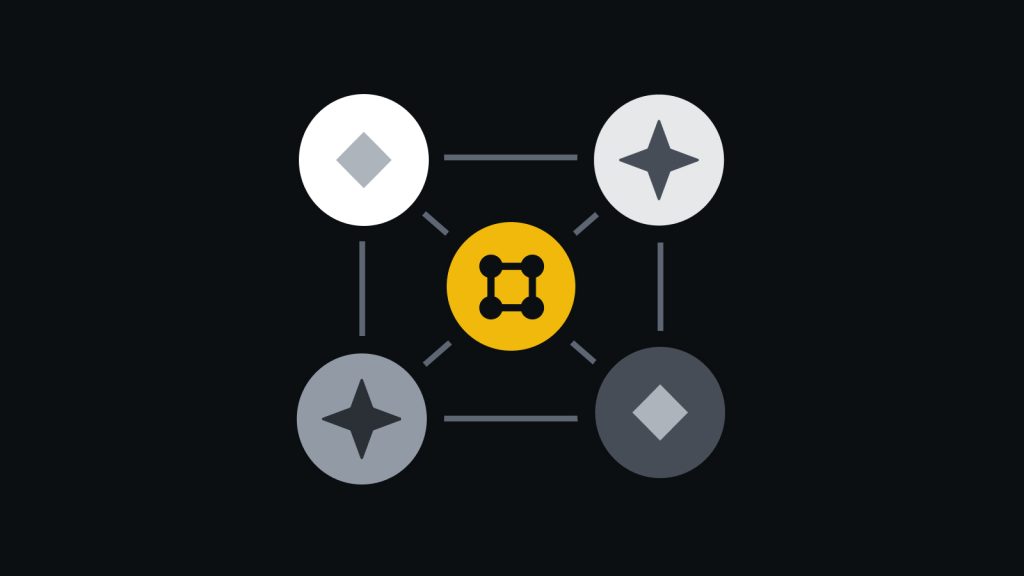Introduction
Blockchain technology, at its core, is defined by decentralization. The ability to distribute power and control across a network of participants, rather than relying on a central authority, is one of the most transformative aspects of blockchain. This decentralization is not just a matter of organizational structure; it is an integral component of blockchain’s security framework.
Security is one of the biggest challenges facing modern digital systems, especially in the context of financial transactions, supply chain management, and identity verification. Traditional centralized systems depend on trusted intermediaries (e.g., banks, corporations, or government institutions) to maintain security. In contrast, blockchain’s decentralized nature removes the need for these intermediaries by distributing control across a network of nodes. By doing so, it leverages the power of cryptographic algorithms and collective agreement to ensure the integrity and safety of data, making it resistant to tampering, fraud, and censorship.
In this article, we will explore the critical role decentralization plays in ensuring the security of blockchain networks. We will examine the fundamental principles of decentralization, its relationship with trust and security, the vulnerabilities it mitigates, and why it is indispensable in maintaining the core tenets of blockchain: immutability, transparency, and reliability.
Section 1: Understanding Decentralization in Blockchain
Decentralization refers to the distribution of authority, control, and decision-making power across multiple independent participants (or nodes) in a network, rather than relying on a central, single authority. This concept contrasts sharply with traditional centralized systems, where a central entity (e.g., a government or company) is responsible for managing and controlling all aspects of the system.
In the context of blockchain, decentralization has multiple layers:
- Network Decentralization: The physical distribution of nodes across different locations, making it harder for a single party to control the entire system.
- Governance Decentralization: Decision-making processes for changes in the protocol (e.g., software upgrades) are made through consensus mechanisms, rather than by a central body.
- Data Decentralization: The distributed ledger, where multiple copies of the data are stored across nodes, ensures that no single point of failure can compromise the system.
The decentralized structure is what allows blockchain to function without a central authority, relying instead on cryptographic techniques and consensus algorithms to ensure the integrity of the system.
Section 2: The Relationship Between Decentralization and Security
Decentralization contributes to blockchain’s security in a variety of ways. By distributing the control and validation processes across a wide network, blockchain ensures that no single party can alter or control the data. Below are several key security benefits of decentralization:
1. Mitigating the Risk of Single Points of Failure
In centralized systems, a single point of failure (e.g., a server or a database) can jeopardize the entire network. If an attacker gains control over this point, they can modify, delete, or corrupt the data, potentially leading to disastrous consequences such as data breaches, financial fraud, or loss of integrity.
In contrast, decentralized blockchain networks have no central entity to target. The blockchain’s distributed architecture means that even if an attacker compromises one or more nodes, the majority of the network remains intact, making it difficult to manipulate or disrupt the system. The consensus mechanisms that govern these networks, such as Proof of Work (PoW) or Proof of Stake (PoS), require attackers to control a majority of the network to alter the blockchain, which is computationally and financially prohibitive.
2. Enhancing Resilience Against Attacks
Decentralization enhances the resilience of blockchain systems against a wide array of cyber-attacks, including Distributed Denial of Service (DDoS) attacks, Sybil attacks, and man-in-the-middle attacks. In a decentralized network, the decentralized nature of node participation and data replication makes it significantly more difficult for an attacker to flood the system with malicious requests or to impersonate multiple nodes to control the network.
For instance, in a PoW-based blockchain like Bitcoin, an attacker would need to control more than 50% of the network’s computational power to launch a 51% attack and potentially rewrite transaction history. Given the massive computational resources required to achieve this, and the distributed nature of miners across the globe, this is incredibly difficult to execute.
3. Reducing Censorship and Collusion Risks
In centralized systems, powerful entities (governments, corporations, or even malicious actors) can censor transactions or manipulate data at will. A centralized authority has control over which transactions are validated, which could lead to censorship or data manipulation.
Blockchain’s decentralized nature makes censorship nearly impossible. Since there is no central authority, no single participant can alter or block transactions on the blockchain. Additionally, the consensus mechanisms ensure that decisions are made collectively, reducing the risk of collusion between malicious parties. Even in cases where some nodes might be compromised, the vast majority of independent participants can still ensure the legitimacy of the system.
4. Ensuring Transparency and Trust
Decentralization fosters transparency. In traditional centralized systems, transparency is often limited, and participants must trust the central authority to act fairly. In blockchain, every transaction is recorded on a public ledger that is accessible to all participants. This transparency reduces the chances of fraud and manipulation since anyone can independently verify the integrity of the blockchain’s data.
Moreover, because blockchain operates on a decentralized consensus mechanism, trust is distributed across the network rather than being placed in a single authority. Users trust the protocol and cryptographic algorithms, rather than any individual or organization. This results in a system where trust is built on verifiable and cryptographic evidence rather than faith in centralized institutions.
Section 3: Types of Attacks Mitigated by Decentralization
Several forms of cyber-attacks are either prevented or made substantially more difficult by blockchain’s decentralized structure. Below are some key examples:
1. 51% Attack
A 51% attack occurs when a single entity or group of entities gains control of more than 50% of the network’s computational power or stake in a Proof of Stake-based blockchain. In such cases, the attacker can potentially reverse transactions, double-spend coins, or block new transactions from being validated.
In decentralized blockchains, the decentralized nature of the network makes such an attack extremely difficult to execute. For example, in Bitcoin’s PoW system, to control 51% of the mining power, an attacker would need an immense amount of computational power and energy. In PoS systems, the attacker would need to control a majority of the staked coins, which would require massive financial resources.
2. Sybil Attack
A Sybil attack involves creating a large number of fake nodes (or identities) to manipulate the consensus process. In centralized systems, attackers can easily create multiple fake accounts or servers to gain control over a system. However, in a decentralized blockchain network, creating fake nodes requires substantial computational resources or financial stakes, making Sybil attacks much more costly and difficult to carry out.
3. Double-Spending Attack
In a centralized system, a trusted third party (e.g., a bank) is required to prevent double-spending—where the same asset or currency is spent more than once. Blockchain’s decentralized nature inherently solves this problem by using cryptographic techniques like hashing, timestamps, and consensus algorithms to ensure that once a transaction is recorded on the blockchain, it is immutable and cannot be altered.

Section 4: The Role of Consensus Mechanisms in Securing Blockchain
Consensus mechanisms are the backbone of blockchain security. They allow decentralized participants to agree on the validity of transactions and the state of the blockchain, ensuring that no one participant can unilaterally alter the blockchain.
Different blockchain networks use various consensus algorithms, each offering a different balance of security, energy efficiency, scalability, and decentralization. Below are some widely used consensus mechanisms:
- Proof of Work (PoW): Used by Bitcoin, PoW requires participants (miners) to solve complex mathematical problems to validate transactions. This mechanism is computationally expensive but highly secure, ensuring that a single malicious entity cannot easily control the network.
- Proof of Stake (PoS): Used by Ethereum 2.0 and other networks, PoS selects validators based on the amount of cryptocurrency they hold and are willing to stake. PoS is more energy-efficient than PoW while still offering robust security features.
- Delegated Proof of Stake (DPoS): A variation of PoS, DPoS allows stakeholders to vote for delegates who validate transactions, increasing transaction throughput and governance efficiency.
- Practical Byzantine Fault Tolerance (PBFT): Typically used in permissioned blockchains, PBFT offers high transaction throughput by requiring a majority of nodes to agree on the state of the blockchain before a block can be added.
Section 5: Decentralization and Blockchain Adoption
As blockchain adoption increases across industries like finance, healthcare, and supply chain management, the importance of decentralization becomes even more evident. Without decentralization, blockchain would lose its core advantages: trustlessness, security, transparency, and resistance to censorship.
The future of blockchain depends on ensuring that decentralization remains intact while addressing challenges like scalability, regulatory concerns, and user adoption.
Conclusion
Decentralization is not just a feature of blockchain; it is the foundational principle that enables blockchain to provide robust security, transparency, and trust. By distributing control across a network of independent participants, blockchain ensures that no single entity can manipulate or compromise the system. As blockchain technology continues to evolve and expand, maintaining decentralization will remain crucial to preserving its security, integrity, and ability to disrupt traditional centralized systems.
















































